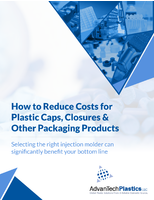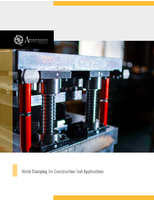Impeller / Propeller / Turbine - Agitators / Mixers
Powders into Liquids: Dustfree Induction and Dispersion

Mixing of powder into liquid is very easy: You simply pour it onto the surface of the liquid and then you mix it in. It is quite clear that this creates a lot of dust - powder falls beneath the vessel but knifes and other equipment may fall into the vessel instead. It is obvious that powder sticks to the walls of the vessel and other devices inside and it is supposed to be normal, that lumps and agglomerates are built up when the powder comes in contact with the liquid. It takes a long time and strong shear to break and disperse them again. The addition of powders into liquids is known as dusty, dirty and unhealthy, for the operator as well as for the process. But there are other ways and means...
TDS machines are systems which induct powder dust- and loss-free directly from a bag into the liquid. The powder is wetted either below the liquid surface or inline in a self circulated external loop. It is dispersed immediately and completely agglomerate free (TDS = Transport and Dispersing System). No dust sticks to the wall of the vessel, no bag has to be lifted on top of the tank or to a filling tray.
Different from any conventional powder transporting or conveying system the TDSmachines do not require any additional air for fluidisation or transportation, no filters, no dust extraction and of course no additional equipment to produce the vacuum. They produce the vacuum directly in the liquid and this way they induct the powder 100% loss free into the liquid. You can induct powders into a standard vessel - an expensive vacuum vessel is not required.
Dust-free handling with TDS induction mixers
The TDS induction mixer is a special version of the Jetstream mixer. Jetstream mixers are well known for their very effective vertical mixing of the liquids in vessels. They are known for a much higher homogeneity compared to any other stirrers. The mixing head consists of a rotation hyperboloid shaped guiding tube - the stator. In the centre of the stator a fast turning impeller rotates and forces a strong stream of liquid downwards to the bottom of the vessel. On the bottom, the stream is redirected along the wall of the vessel upwards until it reaches the surface of the liquid. Finally it moves back to the mixing head. That way the complete content of the vessel is vertically circulated and homogeneously mixed. This mixing principle is recommended especially for solid-liquid blends, because the solid typically tends to sediment at the bottom of the vessel. A Jetstream mixer avoids sedimentation totally.
The TDS induction mixer produces a strong vacuum in the centre of its rotor. This vacuum is being used to induct powder material. The powder is typically inducted using an induction tube and induction hose. The complete wetting of the powder is effected in the mixing head below the surface of the liquid. Because of the enormous turbulences in the fast rotating rotor there is an immediate and intensive micro mixing of powder and liquid together. No dust comes out of the liquid.
No powder sticks on the shaft of the mixer, on the wall of the vessel or on devices inside. No crusts or agglomerates are being built up. When powder is inducted out of a bag no dust appears even around the bag. The reason is simply sucking powder out of the bag creates an air flow from the outside into the bag. Because of this effect, no dust can come out of the bag during the induction procedure. The bags are completely emptied. If just a part of the powder in the bag is required for the process, the bag may be placed on a scale and the required amount of powder can be dosed exactly.
TDS induction mixers have proved themselves in many cases where dusty, dirty and harmful powders such as black carbon, pigments, silica or diatomaceous earth have to be mixed into low viscous liquids.
Because of current discussion about the risks of fine dust in the air, the population naturally is very sensitive against any kind of dust in the air. Dust with a particle size below 10 ìm is considered as fine dust. The maximum permissible exposure limits are given in ppm. Persons use to handle such materials in the industry may know very well that these limits are never adhered to when pouring powder into an open vessel.
The risk for the operator is reduced to a minimum
TDS machines make it possible to empty powder bags and to add powder into liquids dust-free. The risk for the operator is reduced to a minimum. Just when the full bag is opened or when the empty bag is compacted there is a minimum risk of dust. For this reason the use of TDS induction mixers is recommended by Employer's Liability Insurance Associations.
TDS induction mixers which are installed inside the vessel may be used for a wide range of products but unfortunately they also have limitations. The viscosity of the basic liquid may not exceed 1000 mPas. Thickeners or sticky powders cannot be inducted with this machine. The filling level in the vessel must follow certain conditions and the maximum length of the machine is limited.
For this reason an improved TDS machine has been developed: the Conti-TDS. This machine can be used for almost every powder, every viscosity and every batch size. The Conti-TDS is an Inline dispersing machine that produces a strong induction vacuum in its dispersing zone. This vacuum is used to induct powders dust-free from bags, hoppers, containers, BigBags or silos into a liquid. The machine can work with any viscosity that can be pumped and even sticky powders are no problem. The machine is installed outside the vessel and connected to the vessel via pipes ore flexible hoses. That's why the machine works independent from the size or the filling level of the vessel. Very often the machine is connected not only to one vessel but to two or more vessels or the machine is placed on casters and moved around to several places. Similar to a pump, the machine circulates the liquid by itself in a loop.
Even finest powders are completely wetted immediately
Powder and liquid reach the mixing chamber on completely separated ways. They can not get in contact with each other before they reach the dispersing zone. In the dispersing zone powder and liquid are dispersed under strongest turbulences with a very high shear rate and under vacuum. Even finest powder particles are immediately and completely wetted. Dispersion qualities and concentrations of solids can be reached which could never achieved using traditional or conventional mixing systems such as dissolver mixer or injector systems.
The place to install a Conti-TDS may be selected so, that bag handling and transportation can be minimized. The lifting of bags to a platform is eliminated. The machine may be operated either in vertical or horizontal set-up and the position of the liquid connections can be adapted to the on site situation.
An important advantage is the possibility to integrate the machine into existing processing plants easily. Modifications of buildings, vessels or process equipment are normally not required. After powder induction, the powder valve will be closed and the Conti-TDS is operated as an effective inline dispersing machine until the required particle size distribution, homogeneity or consistency is achieved.
Another important aspect is the independence from any influence of the operator and a constant powder induction rate. The problem is well known when producing lacquers, cleaning gels, detergents or cosmetic products: the quality and the viscosity of the final product varies uncontrolled depending on how fast the powder was added during the process. Using a Conti- TDS, these problems will never occur again.
Conti-TDS machines are offered in 7 different sizes beginning from 10 to maximum 350 hp (7.5 to 250 kW). Induction rates can reach values of almost 1000 lb/min when inducting Calcium carbonate or starch from a BigBag. The most machines in the industry are between 20 and 75 hp and induct powder between 20 and 200 lb per minute. Comparing the dispersing effect of the Conti-TDS with conventional systems, then astonishing values can be stated. The most important parameter to determine the dispersing effect is the shear gradient - the quotient out of shear speed and gap inbetween the shear rings. In general, a stirrer offers a shear gradient of about 20 s-1 and a dissolver about 50 s-1 while a Conti offers a shear gradient of 50.000 s-1 and thus is a thousand times higher compared to a dissolver.
Depending on the processing task, the machine can be equipped with a variety of powder inlets and dispersing tools. In case shear sensitive products have to be treated, then the stator can be removed easily and powder is inducted into the liquid without any appreciable shear effect.
Low and medium viscosity products can be handled by the machine itself, no additional pump is required. For this reason the machine may be used as a transfer pump to the next processing step as well. Additional pumps are not required. Only when inducting into a high viscous liquid, such as knifing fillers, adhesives, offset printing ink, seal compounds or similar a volumetric positive pump is installed at the liquid outlet of the machine.
The addition of powder into an open vessel containing inflammable liquids (solvents) is very dangerous. It is well known that not the liquid itself but the vapour on top of the liquid is inflammable.
Powder - this is forgotten very often- always contains air. Powder that is poured into the liquid may be charged by static electricity and produce an igniting spark. To ignite solvent containing air just a spark with a low energy is sufficient.
When using a Conti-TDS machine, the powder is not poured into the vessel with the solvent vapour on top. It is inducted directly into the circulating liquid. The vacuum in the mixing head inducts the powder into the liquid. Due to the induction vacuum no solvent containing vapours are built up. The induction of powders into inflammable liquids with Conti-TDS is save. Of course the TDS principle is not restricted to powder only, the same machine can be used for the mixing and dispersion of "not mixable" liquids (oil and water) or of liquids with total different viscosities. The low viscous liquid tends to stay on top of the high viscous product for a very long time and a normal mixer or stirrer can not mix it in. On the other hand high viscous liquids are difficult to distribute in low viscous fluids, because the mixer is designed for low viscosities. In all these cases the Conti-TDS provides a continuous dispersion and the liquids are already homogenously mixed when they reach the vessel.




